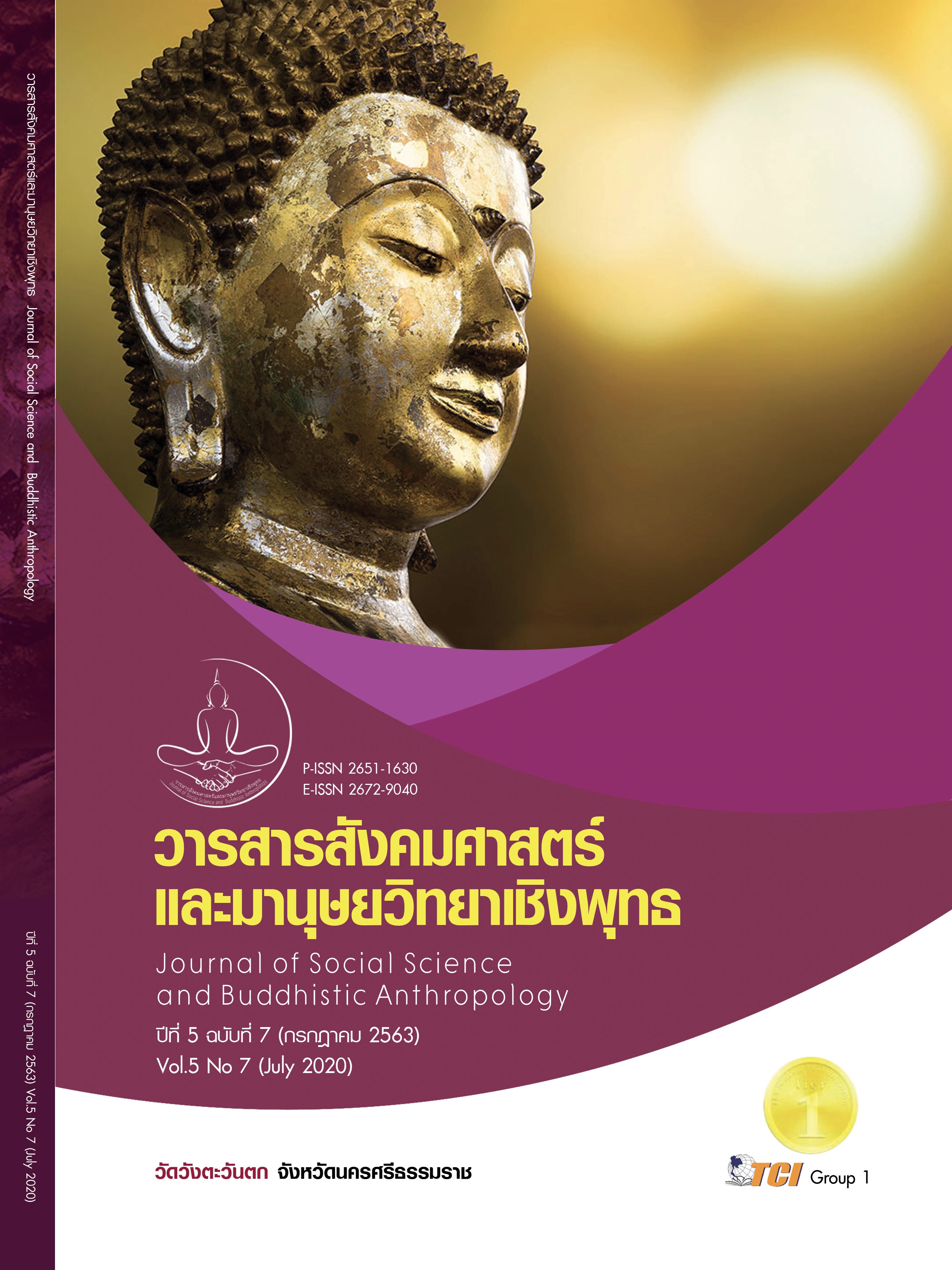OPTIMAL BLUE LIGHT DURATION FOR ACTIVATING ALERTNESS OF DROWSY PEOPLE
Keywords:
Duration, Blue Light, AlertnessAbstract
This research article The objective was to compare wakefulness within the blue light receiving group, 0 minutes, 10 minutes, 20 minutes and 30 minutes and compare the alertness results between the groups receiving blue light 0 minutes, 10 minutes, 20 minutes and 30 minutes. The sample group in this research is 80 students currently studying at Burapha University in the academic year 2019 This research is experimental research. The instrument was the 4Factor Posttest Design. The research instrument consisted of a questionnaire and a Karolinska Sleepiness Scale. (KSS). The statistics used in the analysis are the mean and standard deviation. Analysis of Two-way ANOVA. The results showed that the 10minute blue light samples had the highest mean value of 40 minutes at 5.70. The standard deviation was 1.75 The samples that received 20 minutes of blue light had the highest mean duration of 30 minutes and 40. Minutes were 5.80, the standard deviation was 2.21 and 1.85, respectively, and the samples that received blue light for 30 minutes had the highest mean. The 50th minute was 6.35. The standard deviation was 1.89 and the comparison of alertness within the blue, 0, 10, 20, and 30 minute groups showed that the awake from the measurements at 10, 20, 30, 40, 50, and 60 minutes did not break. Different and comparing wakefulness between groups, it was found that exposure to blue light at different times (0 minutes, 10 minutes, 20 minutes, 30 minutes) had a significant effect on alertness at the .05 level. Measuring time does not affect alertness. And there is no interaction between receiving blue light and time of measurement
References
Akerstedt, T. & Gillberg, M. (1990). Subjective and objective sleepiness in the active individual. Int J Neurosci, 52(1-2), 29-37.
Alkozei et al. (2016). Exposure to Blue Light Increases Subsequent Functional Activation of the Prefrontal Cortex During Performance of a Working Memory Task. Sleep, 39(9), 1671-1680.
Baulk et al. (2001). Driver Sleepiness-Evaluation of Reaction Time Measurement as a Secondary Task. Sleep Biol Rhythms, 24(6), 695-698.
Figueiro, M. G. & Rea, M. S. (2010). The Effects of Red and Blue Lights on Circadian Variations in Cortisol, Alpha Amylase, and Melatonin. Retrieved December 20, 2019, from http://downloads.hindawi.com/journals/ije/2010/829351.pdf
Hennecke et al. (2016). Are you vulnerable to sleep loss? Association between a priori self-assessed sensitivity to sleep deprivation and waking EEG dynamics. Retrieved January 5, 2020, from https://elib.dlr.de/107141/1/2016HenneckeESRS.pdf
Jeffrey et al. (2017). The Nobel Assembly at Karolinska Institutet. Retrieved January 10, 2020, from https://www.nobelprize.org/uploads/2018/06/ press-39.pdf
Matos et al. (2019). Sleep and sex Sleep in adolescence: sex matters. Sleep Sci, 12(3), 138-146.
Motamedzadeh et al. (2017). The effect of blue-enriched white light on cognitive performances and sleepiness of night-shift workers. A field study. Physiol Behav, 177(1), 208-214.
Riechert, H. (2015). Lighting the 21st century. physica status solidi, 212(5), 893-896.
Smick, K. & Villette, T. (2013). LUE LIGHT HAZARD: New Knowledge, New Approaches to Maintaining Ocular Health. New York : Essilor of America.
Zakariassen et al. (2019). Causes and Management of Sleepiness Among Pilots in a Norwegian and an Austrian Air Ambulance Service - A Comparative Study. Air medical journal, 38(1), 25-29.








